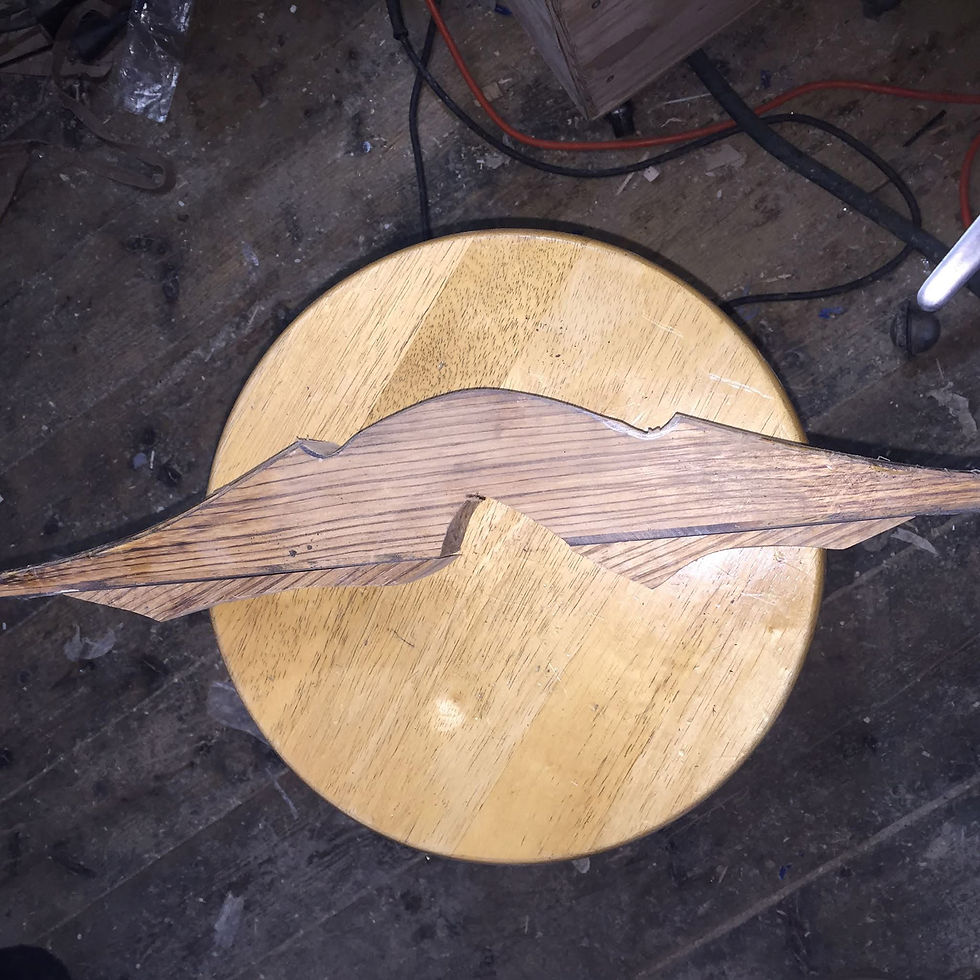Crafting Handmade Arrows
- muleequestrian

- May 25
- 2 min read
To go along with my new bows, I needed some arrows as well. I start off with Port Orford cedar ballasters for staircases from the local hardware store. They have larch available too, and the neatest part of all is these are precut into long squares.

I split these long squares into 4 pieces length wise. Each stair ballasted gives me 4 arrow shafts.

To make each individual shaft, I have a dowel makers jig with an adjustable blade set up. The square end of each ballester split has a square end that fits a socket inserted into an electric drill. The drill spins the square as I push it into the jig and it turns the shaft into a round. I have an attachment on the end that compresses the wood fibers to the final size of the shaft.

I can turn out a lot of shafts quickly. A light sanding preps each one for the next step.

Each arrow is set between two measured points and has a weighted suspended from the center. I have a micrometer as part of the weighted bob to measure the amount of the bend. An AMO spine chart tells me how much draw weight the arrow is spined for on a particular bow. My particular bow has a draw weight of 55# at 28” draw length. I want my arrows to be signed to within + or - 5 pounds of the draw weight as close as possible. This has to do with Archers Paradox and the release of the arrows when flying and the the flight path. I don’t have the room in this short blog to explain this, but I will later in another series.


I use a pair of capped PVC pipes to add the finish and sealer to each arrow. I can simply dip them in a tube of stain, wipe them off, the dip in a tube filled with sealer. I then hang the shafts up to dry.

The next step is to fletch the shafts. This particular jig fletches 6 shafts at a time with 3 feathers in a right hand twist. There’s much to fletching that I don’t cover in this short blog. Right vs left twist using right or left wing feathers. The direction the arrow spins in, even the method of attachment to the shaft. This merely shows how I make my own arrows in the simplest terms.

I use glue on nocks to simplify my arrow making. The alignment of the nocks and feathers are the subject of another later blog.

The pile of finished arrows waiting for the points to be installed. Some will be field points for practice, others will be glue on Zwickey broadheads. The important thing is that no matter the point, they should weight the same. There’s so much more to making a working, balanced archery set. Much more than can be covered in a short blog, so there will be further blogs in the future explaining how and why I do the things I do. There’s no way I can cover it in a single blog — or even two or three.



Comments